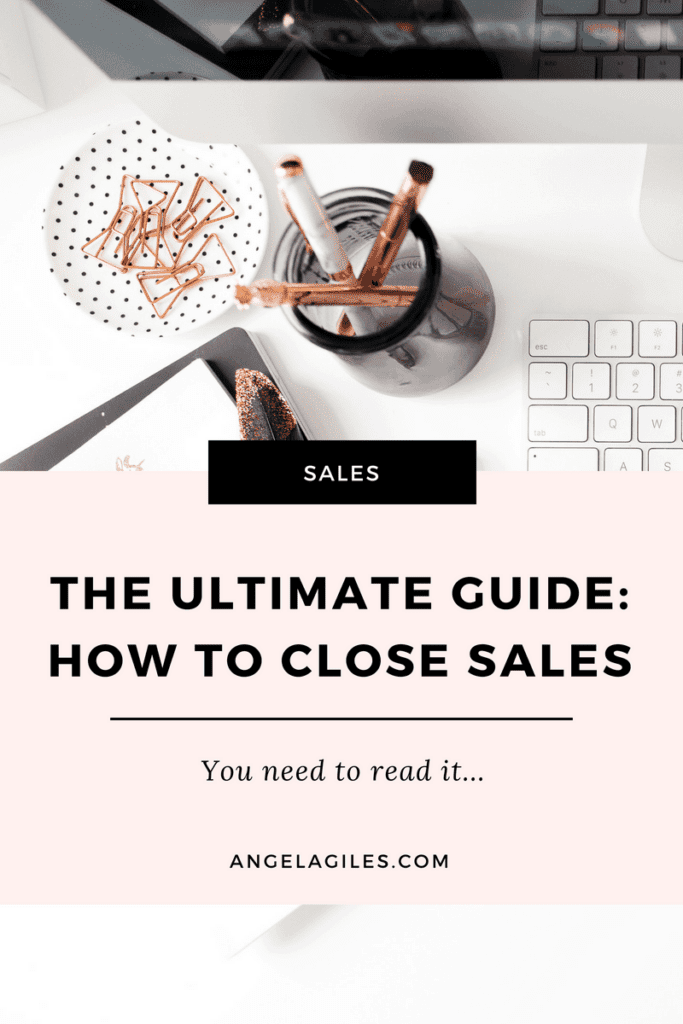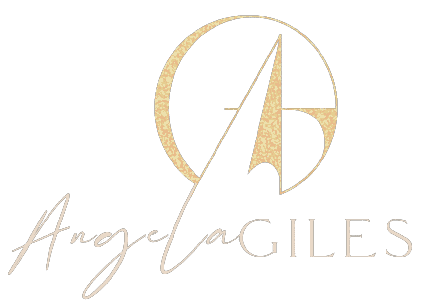We may earn money or products from the companies mentioned in this post.
Not sure you know how to close sales? (you aren’t closing as many sales as you would like…ARGH!!) Closing a sale isn’t as hard as you might think it is. You just need to know a few important types of sales closing methods, rules to get you to the top of your game and the fact that a sale should be treated like a conscious conversation.

In this article, you will find many sale closing tips, important key pointers, rules, and types of sale closing methods. There is a lot to learn and you will find most of it right here. Among what you will learn are different ways to ask for a sale and questions that can engage a very meaningful conscious conversation between you and the client. You’re already an expert salesperson, you just need to polish your skills using all the knowledge shared in this article about how to close a sale.
Closing Sales
Closing a high percentage of your sales is one of the most important and hardest lessons for salespeople. However, closing a sale doesn’t have to be hard. In fact, it is actually quite the opposite if you follow the principle of having a conscious sales conversation.
If you have done a good job at having a meaningful conversation the sale will be almost seamless. However, just in case it does not go as smoothly as planned, you may need to put more effort into your conscious conversations so that you can successfully close a sale.
The way consumers are buying products and services is changing constantly, this makes it very important to constantly re-evaluate your sales conversations. In today’s purchasing arena, people want an authentic sales experience where they walk away feeling like their wants mattered and they weren’t just a number.
You do this by having conscious conversations. When you have a solid strategy, you can make certain that your company is closing consistently more deals.There are many things that can help you get better at closing sales in this manner. Here you will find a versatile guide to learn how to get better at closing sales:
Types of Sales and Rules
The Assumptive Close
The most general close in the field of sales is the assumptive close. Sales that can’t be fitted into a specifically customized category is called an assumptive close. After you are done answering the prospect’s questions and making your presentation, you can ask different questions to make it apparent that you assume your prospect is about to purchase the product. Here are a few example questions you can use:
- Would you prefer it in black or red?
- Our company offers you a 20% discount on a year’s subscription, does that sound good to you?
- Would you like a private coaching along with the membership site?
- When would you like the delivery to be made?
- Is a set of 5 units good for a start?
Coming up with these question isn’t that hard. Using questions like these in closing your sale can help you a lot in closing the sale successfully.
Identify the decision maker
No matter your industry, identifying and knowing the decision maker is crucial to a quick close to the sale. There are several cases when the decision maker sends someone else into the circle to gain all the information about the company or the product.
When you are in a case like this you have to make sure that you get inside the head of the person sitting in front of you. You have to know the interests and preferences of the decision maker and converse accordingly, even if they are not there. Your first preference should be to sit with the decision maker themselves. Do whatever you can to schedule a meeting with them in order to get the best shot at closing the deal.
Overcome objections
Being prepared for your sales presentation and overcoming any potential objection can remove many hurdles on your way to a closed sale. When you are presenting your product you can be caught off guard by an objection which you might not be ready for. You would need to take some time to think up an explanation or a solution which is not going to leave a good impression.
That is why it is critical that you eliminate the objections before they even come up. Sales expert, Tom Searcy calls this a “landmine map”. When you have an outline of all the anticipated problems and have thought of all the potential risks, you can reduce the resistance to much less than expected and shall be able to close a deal with a client successfully.
It is highly recommended that you take your sales team and sit down with them to talk about all of the potential objections that can occur during a sales pitch. Have each of them come up with objections that they think are valid and then work together to come up with a solution. This can help you understand and see any objections that you might have missed.
And then, you can address these objections throughout your conscious sales conversation that you are having with your client. You do this by weaving stories of other clients that have encountered specific challenges and how they dealt with them throughout your presentation. Thus, in fact eliminating the objections.
The Custom Close
If you have had a conscious conversation with the customer then you probably know all about what they want and their requirements of their product or service. When you are about to close the sale, take a look at the notes you have made about the prospect’s desire and find their #1 problem and use the value layering concept.
The value layering concept works like this: Let them know that a certain portion of your product/service/program offers the exact solution to their #1 problem. For example, if your business specialized in dealing with completely out of control teenagers and one of the specific issues that your prospective client had was getting their child to quit skipping school you could say something like:
“So you want Mary to start attending classes every day, and you’d prefer that it begins to happen right away?
Wait for the prospect to answer and assuming the say ‘yes’, smile and say:
“Luckily our Parenting Wild Child Program is the perfect match for you. It comes with an exceptional Back to School module that has an 87% success rate at getting children back in school within 14 days and better yet they continue to stay in school. “
Get their buy in and then go to the 2nd problem they have shared with you and repeat the same process by identifying what in your program will solve their problems. As you repeat this process pretty soon your customer will feel like you taylored a whole program to suit their EXACT needs.
If the prospect is still hesitating at this point, then there are probably objections that are unsolved in their mind. It is now your job to find out what bothers them and take care of the issue in order to close the sale. Ask them what their objections are and say: “Let’s talk about that.”
The Time-Limit Close
This is one of the most useful types of sales closes. When your prospect says “I would like to think about it” it usually means you haven’t eliminated the objection underneath it.
So you must acknowledge that they want to take their time and let them know you can’t guarantee that the offer will be still available due to whatever circumstance it might be. Depending on your business it could be the actual physical product itself, it could be only a limited amount of participants in a coaching program or a limited amount of services at a particular price. Then, you must ask they “Why they need more time to uncover the objection underneath it.”
You can also use discounts and promotions with a short expiry date to persuade your customer to buy sooner.
This only works of course when there is actually a promotion like this your company is offering – you should never be dishonest with your customers. This can result in you losing the customer for good.
Close Your Mouth
Any expert on how to close a deal successfully knows and states that sales have a simple golden rule: “After a question is asked, the first one to talk loses.” Put in easy words, if you have netted the right to ask for a sale, ask for it and say nothing afterward. One of the easiest ways to spot differences between a sales rookie and a professional is that the professional doesn’t have to talk their way out of the sale.
Being nervous or excited can make them lose control of their tongue. They often end up missing out an important point or bringing up something that can compromise the sale close. New thoughts in a closing situation can result in delays.
The temptation to talk is great, but gaining control over it can help you move up a level and you will notice a considerably great increase in your sales percentage.
Five things you can do to get better at closing sales
Know your Impact: make sure you have all the information required for the product that you are selling. The key is to know everything so that when the prospect asks a question you don’t have to panic. Knowing more about your product during presenting it can have a better impact on the customer. It can improve efficiency, increase sales conversions and reduce operating costs. You can make your message even more impactful by adding metrics.
Be a storyteller: share your experiences and examples of how you and your product have helped the people you have reached out to. Share the experience of the customers you had. Tell them what problems they had to face before and how they got over the issue with the help of your product. Hint: this is a great way to eliminate ojections.
Take your Time: Start off having a conscious sales conversation by taking time to build rapport with your customer. Make sure you are tapping into their desires, problems, and agree with the solution as you go throughout the conversation. Be slow and steady, take your time to build a strong bond and prove to them that you are a credible resource.
Connect the dots: It is important that you engage your prospect in a discussion that leads to an outcome perfect for them. Take them through the journey of a conscious sales conversation by following a simple blueprint:
- Rapport, Set-up Call, Credibility
- Visions, Desires, Goals
- Challenges, Blocks, Limitations
- Cost, Pain of the Challenges – Exploring the Gap
- Turn Around New Vision
- Your Solution
- The Offer
- Conversion
Understanding the flow of this simple blueprint and practicing it will help you make authentic connections with your potential customer. If you aren’t making enough connections with the prospect it will be harder for you to close the sale.
Stop trying to close: Instead of trying to close a sale by persuading your prospect, take them through the process of connecting the dots. The prospects of today are too smart to fall prey to the traditional closing techniques. The more you try to do it, the difficult it becomes to convince them. Instead, you should by spending time developing authentic connections with them. If you do this, you will have your prospect saying, “Where do I sign?”
What is the Right Way to Ask for a Sale?
There are different ways to ask for a sale. You can ask several questions which can help you engage in a conversation that can lead up to asking for a sale. Here are a few examples:
- Would there be any specific reason for you to not business with us?
This is a trick question and mostly forces the client to say ‘no’ to this question. If the answer is ‘yes’ it is your job to begin handling the objections without bringing the deal to an end. Typically, if this happens, you haven’t connected deep enough with the client for them to tell you the “real” reason why they aren’t ready to purchase from you.
- It seems like this product is good for [specific task] in your company. What are your thoughts?
This question makes your client think about all of the things your product will be useful in for them. This makes them think about the different services they need and how your product is going to provide it to them. Having your client engage in such conversation you can make your product sell much efficiently. In the best case, your client will say something like, ”Yes I think it will be good for [specific task]” after that the perfect response would be, “Perfect!”
- If we were able to give you a [discount/bonus/incentive], would that be enough to compel you to sign the contract today?
This selling technique isn’t applicable on each occasion. You cannot use it for every sale. For bigger sales or deals though, it can be a good tool. Offering a time-sensitive or exclusive bonus can make the offer sweeter for the client and make the offer more compelling for them. Discounts in price can also make a lot of sense as a competitive move in the market.
What is the Right Way to Close a Sale?
If you are ready for a more concise approach on how to close a sale, use these closing sales statements for greater impact:
- Unless there are any more questions, I think we are set to start.
This question is one of the best sales closing lines and makes you leave the door open for them to get more information from you while also letting them know what your stance is. If you have done a good job connecting with the buyer and answering all their objections, the buyer will say something like, “No, I think we should proceed”.
- Let’s talk about the price.
With a straightforward sales closing question like this, your conversation moves from your solution directly to the offer.
- What are your thoughts about this?
You can use this question to figure out how ready your prospect is to move forward. If they are ready you will know right away from their response but if there is something holding them back, you will observe some hesitation or holding back. Use this opportunity to learn what bothers them and what you can do to get rid of that issue.
- We can take as much time as you like, but I am aware that you have other matters to attend to. Keeping that in mind we let’s move forward and talk about what that might look like.
You don’t want to rush your client too much, but letting them know that the time is limited can help you bring up the offer sooner. This works particularly well for people that go around in circles and helps them stay focused and moving forward in the sales process.
With all this, you now know how to close sales! Just remember to be positive and believe in your skills. Because as the wise ones say, “You don’t have to be great to start, but you have to start to be great”.
WE WOULD LOVE TO KNOW IF YOU FOUND ANY OF THESE IDEAS ON HOW TO CLOSE SALES HELPFUL! PLEASE SHARE IN THE COMMENTS BELOW.
AWeber Sign Up Form authentication failed. Please verify the settings to continue to use AWeber Sign Up Form.





